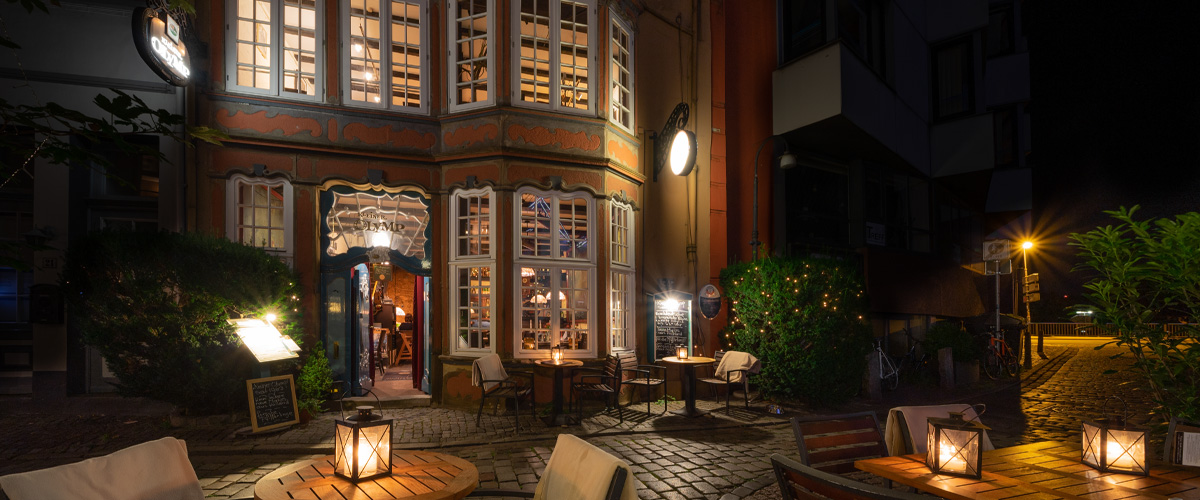
Our current opening times:
Monday - Thursday
16:30 - 23:30 Uhr
Friday - Saturday - Sunday
12:30 - 23:30 Uhr
Closing Days
24.12.2025 | 01.01.2026
Welcome
Our restaurant is located in the oldest quarter of Bremen called "Schnoor".
The Schnoor is located in the middle of the city, only a couple of minutes walk from the marketplace.
The "Ostertor-Quarter" and the "Schlachte" are as well just around the corner.
A wide cultural offer can be found in the immediate vicinity.
Restaurant & Cafe
Since the nineties the Kleiner Olymp has more and more become a restaurant.
The menu offers old classics like our onion soup, wich is already served since nearly 50 years.
As well you will find solid local meals and tasty fish and meat dishes.
Please have a look yourself... Here to the menu.
Since 1999 we offer next to 3 other tab beers our delicious "Schnoor Bräu".
A very tasty light dark beer with a lot flavor and character.
Post millennial it was possible to renovate the 2nd and 3rd floor. Since ever then our guests have the possibility to use our
'Clubraum' as a separate room.
Since the 60th
1962/63: the house is restored and on 09.10.1963,
the Kleiner Olymp opened its doors
(one of the most beautiful Rococo doors in Bremen).
Superficially, the name ìKleiner Olymp is a little confusing and
could be thought of to point to the great Greek Olymp.
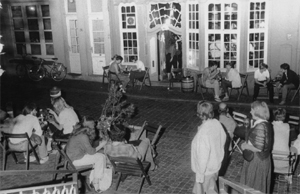
In reality the name originated from the movie ìKinder des Olymp
( Children of the Olymp) from Marcel Carne,
starring the famous mime Jean Louis Barrault,
filmed in France (1943-45) before the period of existentialism
which expressed itself in the Olymp
through the
Rotweinschwemme (red wine with mountain) during the sixties.
It is still visible today from the ìGoldene Eckeî (golden Corner)
and through the paintings on the walls, which have survived a fire.
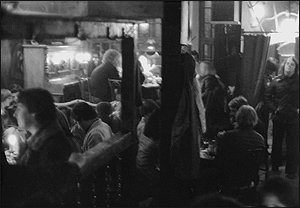
The ambience of the restaurant has hardly changed
in its 50 years of existence,
but it lived through a lot of
different periods. It developed from an artistic, individualistic
background (which is still present today),
through college life,
folklore and Jazz into a restaurant which is known beyond the
border of this region for its region specific, abundant meals.
To complete the history:
Spring 1992: The managers of the house
(who have been trying to conserve the unique features of the
house for two generations already), bought the whole residence.
Historical background
The exact date of its origin connate be determined anymore.
Todays fasade originated around 1700, but it could have been
added on to a much older house.
As early as 1700, the house was owned by the city.
The inhabitants of the house were guards of the city wall.
We gathered their names from the book where the rent tax
used to be recorded.
From 1710: Johann Borchmann Junior.
1720-1724: Berend Kreyenborg (until1762).
13.05.1762: Joh. Kannengiesser, a seaman.
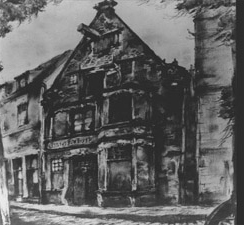
19.06.1797: Helmrich Lubbers bought the house from the heirs of
Joh. Kannengiesser.
He was a seaman as well,
but must have accumulated some money since beginning in
April 1862,
the frontal house (today Altenwall 28) was added
to the house, starting with only two stories of the house.
A bath house was operated out of both houses;
they were even allowed to dig their own well for that purpose.
The bathtubs (including hot water) could be loaned out to
affluent citizens as well.
01.03.1848: sold to Joh. Hinr. Spilker, ship captain.
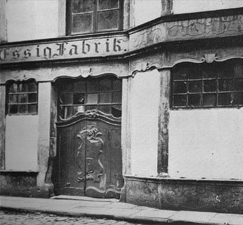
15.03.1874: Heinrich Willh. Froehlke bought the whole residence
and
established a vinegar and mustard factory which
survived under his name for almost 60 years.
The company Essig Kühne continued to run the factory
out of the residence up until 1952.